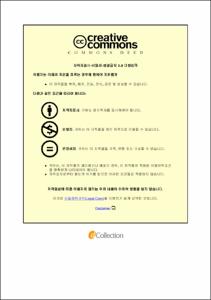간세포암이 재발한 간이식 수혜자에서의 sorafenib과 mTOR 억제제의 항암효과
- Abstract
- This study aimed to evaluate the antitumor effect of sorafenib, mTOR inhibitor (mTORi) , and their combination therapy in liver transplantation (LT) recipients with hepatocellular carcinoma (HCC) recurrence via laboratory-based research study followed by subsequent validation in the clinical LT setting. In the laboratory study, HepG2.2.15 liver tumor cell line and two patient-derived graft HCC cell lines were used for in vitro cytotoxic studies. HepG2.2.15 cells were also implanted to nude mice followed by oral administration of sorafenib and everolimus for in vivo study. After treatment with everolimus and sorafenib, cell viability and apoptosis assays revealed noticeable cytotoxic effects with individual agents and augmented effects by combination therapy. In vivo mouse study demonstrated similar cytotoxic outcomes, with maximal decrease of tumor weight and the greatest inhibition of α-fetoprotein (AFP) and hepatitis B virus X (HBx) expression by combination treatment. In the clinical study including 232 LT recipients, post-recurrence survival rates were not different following sorafenib administration (p=0.168), but were significantly improved following mTORi administration (p<0.001). Combination therapy demonstrated no noticeable synergistic antitumor effect. Although there was a prognostic difference according to the time of post-transplant tumor recurrence (p<0.001), mTORi-associated antitumor effect was present regardless of the time of tumor recurrence (p ≤0.098). Our laboratory study demonstrated synergistic antitumor effects of sorafenib and mTORi, but this was not reproduced in our clinical LT study. Because mTORi administration was well tolerated and beneficial for post-recurrence survival, administering mTORi in LT recipients with HCC recurrence appears worthwhile.|본 연구에서는 간세포암이 재발한 간이식 수혜자에서의 sorafenib와 mTOR 억제제(mTORi) 의 항암효과를 규명하고자 실험실 연구와 임상 연구를 시행하였다. In vitro 실험에서는 HepG2.2.15 간세포암 세포주와 환자의 간세포암에서 추출한 세포주 (PDX) 를 사용하여 sorafenib과 everolimus를 각각 주입하였을 때와 병합하여 주입하였을 때의 세포독성 효과를 평가하는 실험을 진행하였다. In vivo에서는 생쥐실험모델을 통하여 HepG2.2.15 간세포암 세포주를 주사하여 종양 증식을 시킨 뒤에, sorafenib과 everolimus를 복용하였을 때와 병합하여 복용시켰을 때 종양의 증식 정도를 비교하였다. HepG2.2.15 간세포암 세포주와 PDX 세포주 모델에서 세포 생존도와 세포자멸은 대조군에 비해서 everolimus와 sorafenib 각각 모두 유의하게 세포독성 효과를 보였고, 이 두 가지를 병합요법으롤 사용했을 때 그 효과는 각각을 개별적으로 사용했을 때 보다 유의하게 세포독성 효과가 증강되어 나타났다. In vivo 생쥐실험모델에서도, everolimus와 sorafenib을 사용했을 때보다 병합요법을 하였을 때 종양 조직의 무게가 유의하게 더 감소하였고, 알파태아단백 (AFP) 및 hepatitis B virus X (HBx) 발현의 유의한 감소를 보였다. 232명의 간이식 수혜자를 대상으로 한 임상 연구에서는, 대조군에 비해서 sorafenib을 사용한 환자에서는 재발 후 생존율에 유의한 차이가 없었지만 (p=0.168), everolimus를 사용한 환자에서는 재발 후 생존율이 유의하게 증가하였다 (p<0.001). everolimus와 sorafenib 병합 요법은 유의한 상승효과를 보이지는 않았다. 이식 후 재발한 시기에 따라 생존율에 유의한 차이를 보였지만 (p<0.001), everolimus의 항암 효과는 재발한 시기에 관계 없이 나타났다. 본 연구에서는 실험실 모델에서는 everolimus와 sorafenib의 병합요법이 상승효과를 나타내었으나, 간이식 수혜자를 대상으로 한 임상연구에는 그러한 효과를 보이지 않았다. 간세포암이 재발한 이식 환자에게 everolimus를 사용하는 것은 부작용이 적고 재발 이후 생존을 향상시킬 수 있기 때문에 임상적으로 효용성이 있을 것으로 보인다.
- Issued Date
- 2017
- Awarded Date
- 2018-02
- Type
- Dissertation
- Alternative Author(s)
- Jae Hyun Kwon
- Affiliation
- 울산대학교
- Department
- 일반대학원 의학과
- Advisor
- 황신
- Degree
- Doctor
- Publisher
- 울산대학교 일반대학원 의학과
- Language
- eng
- Rights
- 울산대학교 논문은 저작권에 의해 보호받습니다.
- Appears in Collections:
- Medicine > 2. Theses (Ph.D)
- 파일 목록
-
-
Download
 200000004626.pdf
기타 데이터 / 1.39 MB / Adobe PDF
200000004626.pdf
기타 데이터 / 1.39 MB / Adobe PDF
-
Items in Repository are protected by copyright, with all rights reserved, unless otherwise indicated.